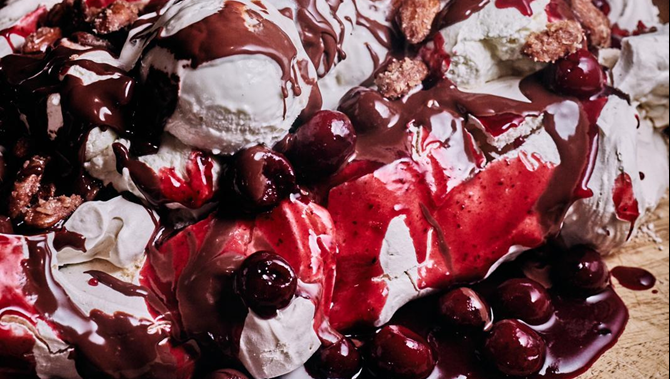Pavlova is believed to have originated in Australia or New Zealand in the early 20th century, although my cousin’s New Zealander husband will declare with the utmost sincerity that the latter is inarguably correct. Head to Clapham in south-west London, for many years my home, and you might
hear a different version. Either way, it is Antipodean and you might deem it
unsuitable for this home of European recipes.
But pavlova, that ever-popular and festive meringue-based dessert, was, as its name will imply, named after a Russian: Anna Pavlovna Pavlova, a prima ballerina born in 1881 and a principal artist of the Imperial Russian Ballet. She was most famous for her creation of the role of The Dying Swan, which she performed with her own company, and was also the first ballet dancer to tour around the world. She performed as far away as Australia.
Indeed, Pavlova’s European connections were strong, too: in 1912, she moved to a large house in north London, where she kept swans; later, she set up a dance school in Paris, and regularly flitted between the two cities.
Sadly we cannot dwell for too long on a ballerina, however rousing and iconic. We must now switch our attention to the dessert she inspired. Pavlova, as you’ll no doubt know, is made with soft meringue, crisp meringue, whipped cream and bountiful fruit. It’s most commonly enjoyed in the summer, so what better way to look forward six months by making one now? The point is that pavlova is delicious.
Mark Hix is one of Britain’s most famous chefs. He is best known for his work at his Lyme Regis restaurant The Oyster & Fish House, and now for his
arrival at The Groucho. His pavlova calls for cherries – both fruit and as liquor – and as rich, dark chocolate. It is light, yet soothing, and an excellent pudding to share.
PAVLOVA
SERVES 4-6
For the meringue
4 egg whites
140g caster sugar
Half tsp cornflour
Half tsp white wine vinegar
To serve
1x 400-450g tin of black or morello cherries
2-3 tbsp cherry liquor
1 tbsp cornflour
6-8 tbsp crème fraîche
6-8 scoops good-quality dark chocolate ice cream
A handful or so of dark chocolate shavings (optional)
First, make the meringue and pre-heat the oven to 120C/gas mark 1. Clean the mixing machine, whisk in boiling water and dry with kitchen paper to remove any traces of grease, as this will affect the stiffness of the egg whites once whisked. In a mixing machine with a whisk attachment or by hand (though this will take a while), whisk the egg whites until stiff.
Add the caster sugar and continue whisking until they are really stiff and shiny. Add the cornflour and vinegar and whisk again for about 2-3 minutes or until the mixture is nice and stiff.
Spoon the mixture on to a clean baking tray lined with silicone or greaseproof paper with a large metal spoon into a slipper shape.
Cook in the oven for 1½-2 hours or until the meringue is crisp on the outside and soft in the very middle, but don’t let the outside colour – you want it white. You may need to cook it a little longer depending on your oven; remove and leave to cool.
Open the can of cherries and drain the juice into a saucepan. Add 100ml water and the cherry liquor. Bring to the boil, dilute the cornflour in a little cold water and stir in enough to thicken the sauce; continue simmering for a couple minutes then add the cherries, remove from the heat and leave to cool.
To serve, alternate the crème fraîche and ice cream on top of the meringue, making indentations to avoid the ice cream sliding off, then spoon the cherries and sauce over and scatter the shavings on top.




